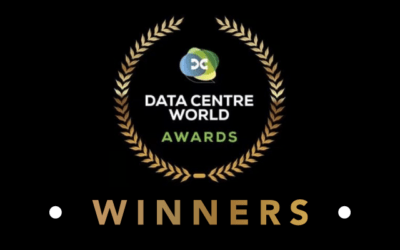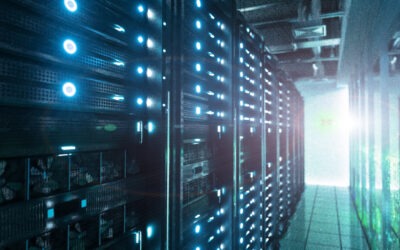With energy prices sky high, energy efficiency is now ever more crucial. After all, you don’t want to pay for more energy than you need. Working with a sustainable data centre can help ensure your energy consumption is kept to the minimum you require – good for the environment, and for your bottom line.
What is a sustainable data centre?
Sustainability is all about minimising your impact on the environment by reducing resource use. In the context of a data centre, that means limiting energy use to the minimum level possible and also reducing water consumption. But powering the IT infrastructure, cooling systems and operational requirements it takes to keep a data centre performing effectively uses a lot of energy – so, how can a data centre operate sustainably?
This is a question that most data centres have been pondering for years, and data centres have worked hard alongside the industry trade association techUK to commit to a data centre energy routemap. It’s a long-term environmental and financial imperative, essential to keeping data centres’ operating costs low, and enabling them to offer a competitive service. One key area to reduce energy consumption is cooling. New, cutting-edge technologies have enabled data centres to save huge sums on energy costs, and provide a lower-cost, more environmentally-responsible colocation provision. This also means that when energy prices are high, customer costs are mitigated to an extent by efficiency measures.
For data centres that haven’t made these investments, it is going to be difficult to react nimbly to today’s energy price hikes. It’s not the kind of undertaking you can make on a whim; it’s more of a long-term project that aligns with the data centre’s strategic operational objectives.
Why cooling counts
In a data centre, cooling is the biggest consumer of energy outside of powering your servers. That’s why it’s so important to partner with a data centre that is using modern, efficient cooling methods.
Data centre cooling has evolved from wall-mounted air conditioning units like you might have in your office – insufficient for today’s power-dense data floors – to floor-based computer room air conditioning (also not very efficient), and now to much more advanced methods. At Redcentric we use a combination of cooling methods to bring down our energy and water consumption, including adiabatic cooling towers, rear door cooling and immersion cooling. It all ensures we’re keeping your servers at optimum working temperatures, while still reducing our environmental impact.
Managing and monitoring
Energy efficiency can also be gained by measuring and monitoring hot spots on the data floor, which helps data centres to figure out their worst culprits, and to plan and act accordingly. Turning to performance optimisation software to control cooling will also help data centres to avoid over-cooling, which is a waste of money and resources.
Other actions around the data centre like installing LED lights, motion sensors to ensure lights are only when they need to be, turning off equipment that is not use, etc. will all make a difference to a data centre’s overall energy consumption – and to your final bill.
Data centres’ uninterruptible power supplies (UPS) can also be a source of wastage, particularly if they are older. Newer models include high-efficiency transformers, power management systems and even eco modes to reduce energy loss.
How to compare data centres on energy efficiency
Between UPS and other energy equipment, cooling systems, and energy usage throughout the rest of the facility, it’s incredibly difficult to try and compare the energy usage of data centres in a granular way, which is what makes PUE scores so useful.
The PUE – Power Usage Effectiveness – score of a data centre is an easy way to judge their performance on energy efficiency. It divides the data centre’s total power usage by the amount used to run the IT equipment within the data centre – basically showing how much energy is expended on cooling, lights, etc. The dream scenario is a PUE of 1.0, where all of the energy used in the data centre is ‘spent’ on the servers it holds. A 2020 global survey found the average data centre achieves a PUE of 1.59. Redcentric has a PUE of 1.14 – so there is a marked difference in what is achievable, and if you are looking for a more efficient data centre it is a score worth looking at. In the UK, a PUE of less than 1.5 should be expected, but the lower the better.
Besides PUE, you can ask your (prospective) data centre about their latest investments, to glean where they are putting their money. When did they last update their cooling systems, UPSs and other core equipment – and where do they get their electricity from? Are they reactive, responding to regulatory drivers? Or are they proactive, driven by an internal desire to improve the sustainability of their operations? Which would you prefer to partner with? As well as choosing the right data centre partner, make sure you’re doing everything you can in this difficult situation with our 8 energy saving tips for data centre customers.
Long-term thinking
Energy efficiency has been brought into focus by the volatility of the energy market – but for most data centres, it has been on the agenda for a long time. By partnering with a data centre that prioritises efficiency, you get the security of knowing that your energy costs are at the lowest possible levels, and that they will continue to do all they can to reduce the burden of high prices. Learn more about how working with a data centre will boost your energy efficiency, or if you want to work with an award-winning sustainable data centre, get in touch.


